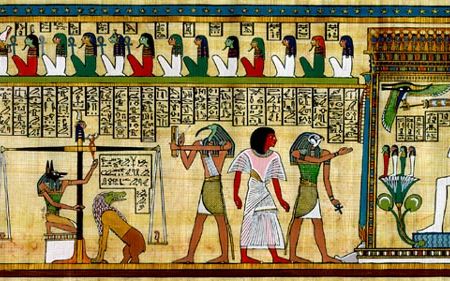The Australian public will have a rare opportunity of discovering the funeral art of Ancient Egypt in an extraordinary exhibition, which will soon open at the National Gallery of Australia. This amazing collection of art and various artefacts in on loan from the famous Louvre Museum, and this event is the first exhibition the Louvre presents in Australia in the last 20 years. Over 200 objects and artefacts have been reunited in order to create a vast image of the Journey to the Afterlife, the journey that the sould undertook after dying. Most of the works have been chosen from the permanent displays of Egyptian antiquities, while others are for the first time in a public exhibition.
In the Ancient Egypt life was a process which didn't end with death. Death was just another beginning, a transformation in the destiny of the soul, while phisical life was just a mere shadow of the perfect world of the Gods. But you had to live your life according to the moral, religious and social rules and obey the Egiptian commandments, in order for your soul to pass this gate to the Underworld, where you would be judged by Osiris. And only if this judgement was favourable to you, the soul would enjoy the Afterlife, eternal and protected by the mighty gods.
The exhibition is also a vivid testimony of the broad range of subjects, variety of media, and especially the skill and talent of the ancient Egyptian artists and craftspeople. The works are varied and exquisite : sculptures in stone and bronze, illustrated manuscripts, painted chests and mummy cases, low reliefs, jewellery, ceramics, wood carving. There are many interesting artefacts in the exhibition, but the smallest and, for many, the most beautiful, are the amulets and jewels made either of ceramic or various types of semi-precious stones. Also, the visitors will have a chance to discover a collection of over two hundred faience ushabti figures, which had the role to act as helpers of the deceased during his journey to the Afterlife, and also to plead his innocence before Osiris. Most of the larger objects are adorned with beautiful hieroglyphic inscriptions, magical invocations to the gods, to grant the soul protection and safe passage to the Hall of Judgement. The panopic chests and mummy cases were adorned with beautiful small paintings showing the journey of the soul to the Afterlife, a strage, misterious but perfect world. The physical form survived by means of the lifelike sculptures and portraits, but the paintings and sculptures representing the gods are in a sharp contrast impassive, detached, far away. The gods are simply watching the journey of the soul, and will only play a part if the magical invocations are pleasant to them.
The exhibition of Egyptian antiquities in one of the most important cultural events in Australia, in the last few years. It is a chance to discover, observe and understand the way the Egyptians understood death and the soul, and also an occasion to appreciate the Egyptian art and traditions.
October 2006


































